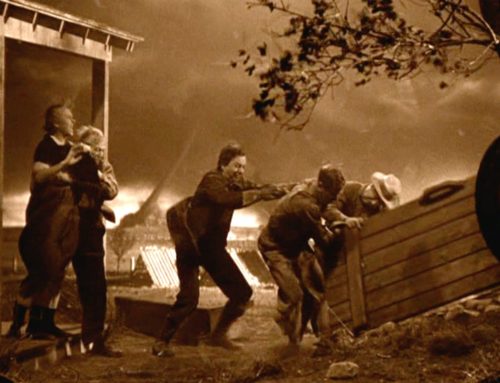According to the FBI, more than one million home invasions occur each year, accounting for 38% of all violent assaults and a stunning 60% of rapes. Clearly, a home invasion is just what it sounds like: an assault on private property and the people residing within. In this post we’ll discuss the ABCs of home invasion, including how to lessen their likelihood and to survive one if it takes place.
To get started, it’s perhaps easiest to separate general acts of burglary from home invasions, and a logical way to do that is through the likelihood of violence.
Burglars, in general, do not want anyone at home. They’re after one thing – property of some kind – and are eager to get in and out with a minimum of disruption. Most burglars do not carry a weapon, recognizing that if they are caught the jail time is significantly higher.
Home invaders, on the other hand, almost always bring a weapon with the expectation – sometimes the hope – they’ll catch someone in the residence. And while the focus of most home invasions is also theft, the more aggressive mindset of the invader leads to a greater likelihood of assault, serious injury, rape and even death.
Also, according to security experts, many if not most home invaders have at least one accomplice. Often, one will make a commotion in the front while his companion (almost always male) works to enter the home from the rear (or vice versa).
How to Prevent a Home Invasion
With home invasion a growing concern, there are a number of steps homeowners and other occupants can take to reduce their likelihood.
- Lock Up – It may surprise you to learn that 40% of break-ins of all kinds take place through an unlocked door or window. Lock up!
- Install a Peep-Hole – Many home invasions occur because a resident opens the door to an unknown visitor. Eyeball your visitor before you open.
- Illuminate – Outdoor lighting can serve as a powerful deterrent to home invaders, since it becomes easy to see them from the street or neighboring homes.
- Get a Dog – In numerous surveys of home intruders, dogs – particularly big dogs with big barks – are listed as a major deterrent. Remember, a home invader or burglar is always performing a mental calculus as to what might happen to him before he thinks about what might happen to you.
- Alarm Your Home – Home alarms can be very effective in deterring home invaders, particularly the kind that create a clamor, activate lighting systems, and alert authorities.
- Control Your Keys – Never hand out your key to home improvement contractors or anyone else you don’t trust. A copy can easily be made.
- Signs – Even if you don’t have a dog, put up a sign that warns one is inside the home, leave a large dog’s water bowl on your porch, and put up signs alerting visitors of alarm systems. In other words, educate would-be intruders that your home is a hostile environment for them.
- Kick Proof Doors – If you’re especially concerned about home invaders, consider a kick-proof door, which uses a sturdier frame and mounts to make it virtually impossible to kick open.
How to Survive a Home Invasion
Despite every imaginable safety precaution, lapses occur or, in some instances, you may be dealing with an especially motivated home invader. What do you do to protect yourself and your loved ones?
First and most important, do not confront the invader. Even if you’re armed or have been taking self defense courses, the intruder has been planning this longer than you have. If the intruder wishes to steal, let him do so. The physical safety of you and your loved ones comes first.
On that same note, put as much distance between you and the intruder as possible. If you have a safe room, get in in and contact the police. Do not hesitate, do not investigate the source of the commotion, get in your safe room and stay there until police arrive.
Third, call the police. They are trained for this and almost always can be on the scene in just minutes. If possible, remain on the line with the dispatcher and tell him/her where you and your loved ones are located.
Lastly and unfortunately, there are times when an invader is there to do violence – to you or a loved one. In instances where you don’t have a safe room, you’re final option is either to flee the home – something that isn’t always possible if the invader surprises you or you have dependents – or defend yourself.
In the latter case, have a plan in place – along with self-defense products (mace or pepper spray) – or a weapon (baseball bat, firearm) and know how to execute that plan. Security experts stress that having a weapon or self-defense implement is not enough – we must practice using those devices and be fully prepared to in the event of a home invasion.


Leave A Comment
You must be logged in to post a comment.